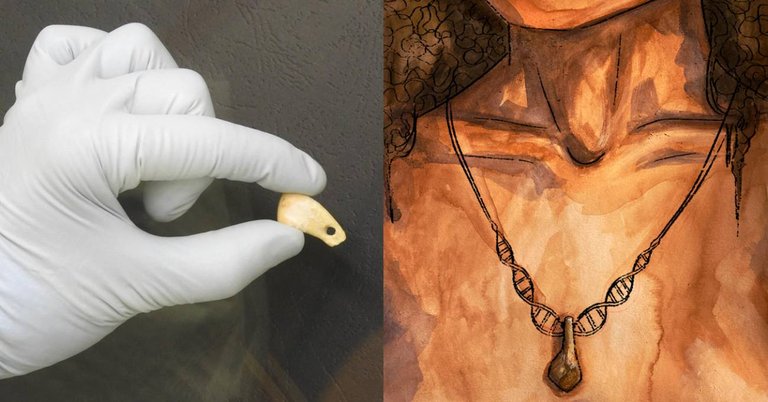They manage to extract the user's genome from a paleolithic pendant

At the Max Planck Institute of Evolutionary Anatomy, a non-destructive method has been developed for the extraction of DNA from some archaeological objects, since, being porous, utensils made with bone or teeth may contain sweat, blood or saliva from the user. With this method, the genome of the user of these devices can be extracted without destroying the sample. This allows us to get valuable information.
An example has been published in Nature: From a zero-yellowish flap found in the Denisova cave, the DNA of a uapiti (deer species) and an ancient being has been recovered using this method.
Researchers explain that in order not to harm the object itself and DNA, the object is introduced into a sodium phosphate solution and the temperature is increasing progressively. Thus, the DNA captured in the old tooth or bone is released into the dissolution, allowing its sequencing, subsequent analysis and dating through the radiocarbon test.
With this, they discover that they were between 19000-25000 years old. It has been determined that the user was a woman and that her genetic characteristics are similar to those of another group living more oriental in Siberia.
With the research, the authors state that the method is useful to recognize the user of objects and conclude that it is a useful tool to relate cultural and genetic footprints.
Buletina
Bidali zure helbide elektronikoa eta jaso asteroko buletina zure sarrera-ontzian











